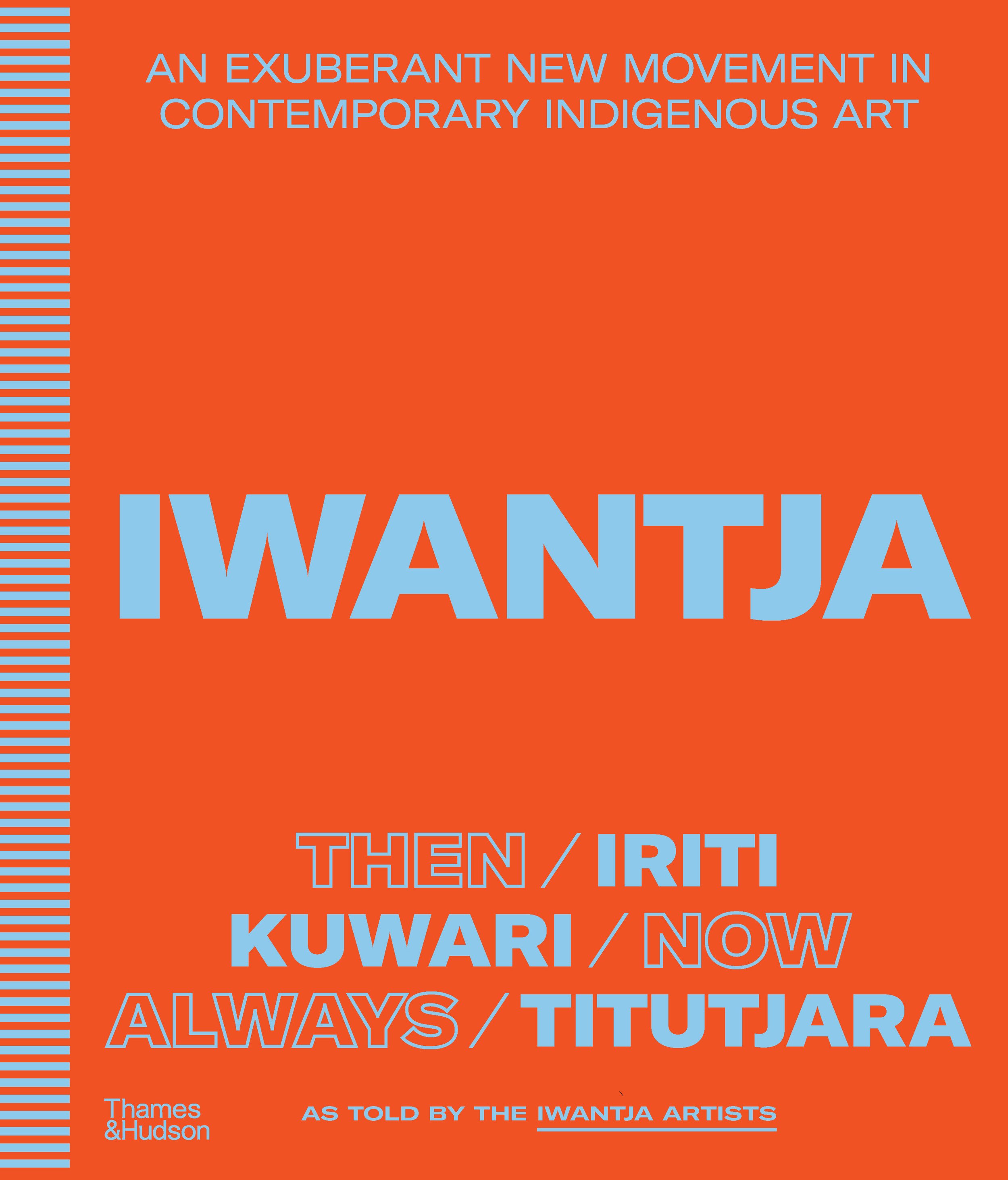IWANTJA – As Told By The Iwantja Artists
Maisie King, Ngayuku Ngura (My Country), 2020 (219-20), acrylic on linen, 152 x 122 cm.
Iwantja Arts is home to some of Australia's most exciting contemporary Indigenous artists – the art centre, a studio collective where the artists paint and socialise, was founded in the 1980s when many Aboriginal communities were fighting for land rights. The new book IWANTJA, is told through the artists' own words.
Photography: Simon Eeles, Rhett Hammerton, Rhett Hammerton Meg Hansen, Chris Groenhout & Iwantja Arts
From left to right: Dudley Robinson, Hamish Kelly, Germaine DeRose, Samuel Baker, Robert Woodford. Photo: Simon Eeles
Untitled, 1984, colour linocut on paper, 30 x 30 cm (image), 59.2 x 42 cm (sheet) by Alec Baker. Image courtesy of Art Gallery of South Australia
Alec Baker in Indulkana Community. Photo: Rhett Hammerton, 2022
Ngura (Country), 2020 (542-20), acrylic on linen, 91 x 67 cm by Alec Baker. Image courtesy of Art Gallery of South Australia
Iwantja Arts is home to some of Australia's most exciting contemporary Indigenous artists.
Located on a small ridge at the edge of the Indulkana Ranges, approximately 575 kilometres south of Alice Springs, Iwantja Arts art centre is home to some of Australia's most exciting Indigenous art.
The art centre, a studio collective where the artists paint and socialise, was founded in the 1980s when many Aboriginal communities were fighting for land rights. It was during this time that now senior artists campaigned to both establish an art centre in the community and for the 1981 Land Rights Act.
As intended, the art centre is now a bustling intergenerational hub of the community where everyone shares stories, creates art and connects with their long-standing culture. Senior artists, such as original centre co-founder Alec Baker, paint alongside budding artists as well as award-winners like Vincent Namatjira, Kaylene Whiskey and Tiger Yaltangki.
ALEC BAKER
BORN . CIRCA 01/01/1932
BIRTH PLACE . SHIRLEY WELL, SA
LANGUAGE GROUP . YANKUNYTJATJARA
When I was a younger man, I was working at the community store. After that I worked hard with my cousin Sadie Singer to establish the art centre for the community.
Ngayulu yangupala warkaringangi tjuwangka. Munu palulanguru ngayulu pulkara mulapa warkaringangi nagyuku kangkurungka tjungu Sadie Singer-la art centre pakaltjingantjaku ngura nyangangka Indulkana community-ngka.
I actually helped to make the building that is now the Iwantja art centre – I worked with the other men to make the cement floor and build the foundation. We also built the three large stone fire pits outside. We worked on building the centre for a long time. First it was the family centre but it’s been the art centre for a long time now.
Ngayulu pulkara alpamilara warkaringangi art centre nyangatja pakaltjingantjaku – ngayulu tjanala tjunguringkula warkaringangi cement mantangka para-tjunangi wali palyantja kuwaripangka. Munula palulanguru waru kutjulpai mankurpa palyanu, nganana rawa warkaringangi centre nyangatja palyantjaku. Nganmanypaya kanyiningi family centre, ka kuwarilta art centre ngaranyi.
Sadie Singer and I travelled to Adelaide to meet with the government to get support for setting up our art centre. We started out by getting a printing press for the community, and then I was carving and printing linocuts with Whiskey Tjukangku and Sadie. Those were the early days of the centre.
Sadie Singer munu ngayulu anu Adelaide-ku kamanta nyakunytjikitja alpamilantjaku nganampa art centre. Nganana uranu printing press community-ku, munu palulanguru ngayulu warkaringangi lino katantjaku munu printamilantjaku Whiskey Tjukankula munu Sadie Singer-la tjungu, kuwaripatjara mulapa centre-ngka.
I am very happy to see the place still running today, it is a very important place for our community. It started with Sadie and me and the other old men and women a long time ago, and I’m very happy knowing that this art centre is still a good place for anangu, and that everyone will be making paintings for a long time in the future.
Ngayulu pukulpa art centre nyangatja nyakula warkarinyi nyangangka, art centre pulka mulapa nganampa community-ku. Panya Sadie Singer-nya, ngayulu munu tjilpi, pampa kutjupa tjuta nganmanypa warkaringangi, ka ngayulu kuwari pukulpa munu kulini panya art centre nyangatja kuwari wiru ngaranyi ananguku, panya anangu tjutangku rawangku painting palyantjaku.
This in an edited extract from ‘IWANTJA – As Told By The Iwantja Artists’ published by Thames & Hudson. Purchase the book online now here.
Alec Baker in the Iwantja Arts studio. Photo: Rhett Hammerton, 2022
IWANTJA – An exuberant new movement in contemporary Indigenous art is available now!
“I went to Adelaide for big meetings, with members of all the communities, to fight for our land rights. When we came back to Indulkana we had a big celebration and inma (traditional song and dance) to celebrate getting our land back. We had a big meeting at Itjinpiri; all the important people were there for the Land Rights Act.”
Ngura (Country), 2018 (158-18), acrylic on linen, 198 x 167 cm by Alec Baker. Photo: Iwantja Arts
Ngura (Country), 2016 (205-16), pigmented ink on paper, 78 x 107 cm by Alec Baker. Image courtesy of Alcaston Gallery. Photo: Chris Groenhout












